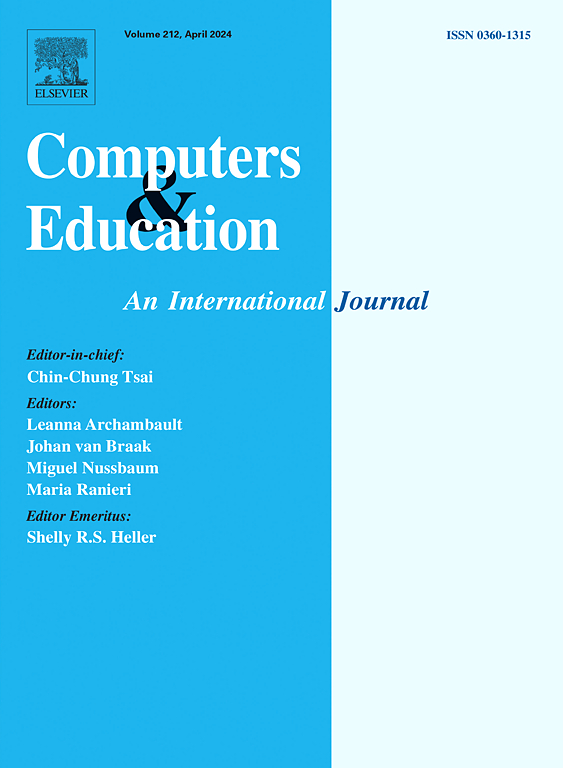L2 vocabulary learning through a COTS adventure game: Individual vs. paired gameplay and the influence of word exposure frequency, word level, and word salience
IF 10.5
1区 教育学
Q1 COMPUTER SCIENCE, INTERDISCIPLINARY APPLICATIONS
引用次数: 0
Abstract
Digital game-based language learning (DGBLL) has demonstrated potential in enhancing language acquisition. This study examines the effectiveness of the commercial off-the-shelf (COTS) game Return to Monkey Island in improving vocabulary learning among Taiwanese EFL learners, with a focus on the effects of individual versus paired gameplay. Addressing a gap in existing research, this study evaluates the impact of individual versus paired gameplay on vocabulary learning, with a focus on word exposure frequency, distribution of occurrence, word level, and word salience. Seventy-nine university freshmen participated in this mixed-methods study, which employed vocabulary pretests, immediate and delayed posttests, including both vocabulary translation tests and Productive Vocabulary Levels Tests (PVLT) to assess receptive and productive vocabulary knowledge. Participants’ attitudes were evaluated using a modified Technology Acceptance Model (TAM) questionnaire, and semi-structured interviews provided qualitative insights.
Both gameplay groups showed significant vocabulary improvement, with the paired group outperforming the individual group in both immediate and delayed tests. Word frequency and salience were key predictors of vocabulary learning in the individual group, while salience was the main predictor in the paired group. Positive attitudes towards collaborative gameplay were noted, with interviews highlighting the added value of peer interaction in enhancing vocabulary learning. These findings suggest that integrating COTS games with a mix of individual and collaborative activities can optimize language learning.
通过COTS冒险游戏学习第二语言词汇:个体与配对游戏以及单词暴露频率、单词水平和单词显著性的影响
基于数字游戏的语言学习(DGBLL)在促进语言习得方面具有潜力。本研究探讨商用现货游戏《回归猴岛》对台湾英语学习者词汇学习的效果,并着重探讨个人游戏与配对游戏的效果。为了弥补现有研究的不足,本研究评估了个体与配对玩法对词汇学习的影响,重点关注单词暴露频率、出现分布、单词水平和单词显著性。本研究采用词汇前测、即时后测和延迟后测,包括词汇翻译测试和生产性词汇水平测试(PVLT),对79名大学新生的接受性和生产性词汇知识进行测评。参与者的态度通过改进的技术接受模型(TAM)问卷进行评估,半结构化访谈提供了定性的见解。两个游戏组的词汇量都有显著提高,结对组在即时和延迟测试中的表现都优于单独组。词频和显著性是个体组词汇学习的主要预测因子,而显著性是配对组词汇学习的主要预测因子。我们注意到学生对合作游戏的积极态度,访谈强调了同伴互动在促进词汇学习方面的附加价值。这些发现表明,将COTS游戏与个人和合作活动相结合可以优化语言学习。
本文章由计算机程序翻译,如有差异,请以英文原文为准。
求助全文
约1分钟内获得全文
求助全文
来源期刊

Computers & Education
工程技术-计算机:跨学科应用
CiteScore
27.10
自引率
5.80%
发文量
204
审稿时长
42 days
期刊介绍:
Computers & Education seeks to advance understanding of how digital technology can improve education by publishing high-quality research that expands both theory and practice. The journal welcomes research papers exploring the pedagogical applications of digital technology, with a focus broad enough to appeal to the wider education community.
 求助内容:
求助内容: 应助结果提醒方式:
应助结果提醒方式:


